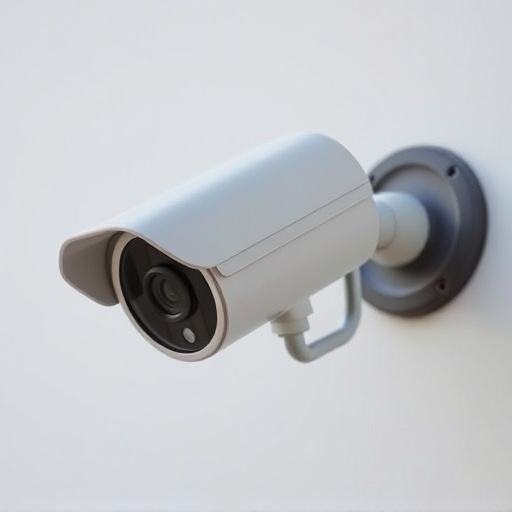In today's digital age, enhancing security for businesses and homes requires a multi-layered approach, with strategic indoor dummy camera mounting locations being an often-overlooked yet effective strategy. By placing these cameras in entrances, exits, and high-traffic areas, potential intruders are deterred, reducing the risk of unauthorized entry or criminal activity. Even if the primary security system fails, their presence acts as a silent guardian. Optimal mounting height balances strategic placement and effective surveillance, with key considerations including unique residential and commercial needs, eye-level or slightly elevated positions, and avoiding obstructions for comprehensive coverage. Strategic placement offers discreet protection while capturing vital activity in high-traffic areas like entryways and corridors. Regular adjustments optimize indoor security measures.
In the realm of home security, visual deterrents are key. An often-overlooked aspect is the strategic placement of fake security cameras, or dummy cameras. This guide delves into the art of indoor dummy camera mounting, highlighting the critical height considerations for optimal effectiveness. Understanding the need for these subtle yet powerful tools involves navigating various factors, from room layout to potential line-of-sight obstructions. By mastering the best practices for placement, homeowners can fortify their spaces with a vigilant, though silent, guardian.
- Understanding the Need for Indoor Dummy Camera Mounting
- Factors to Consider When Choosing Mounting Heights
- Best Practices for Indoor Fake Security Camera Placement
Understanding the Need for Indoor Dummy Camera Mounting
In today’s digital era, security is paramount for businesses and homes alike. One often-overlooked aspect of comprehensive security is the strategic placement of dummy security cameras. These indoor dummy camera mounting locations serve as a powerful deterrent against potential intruders. By simulating active surveillance, they create an impression of heightened security, significantly reducing the likelihood of unauthorized entry or criminal activity.
Understanding where to strategically place these dummy cameras is crucial. Common indoor areas such as entrances, exits, and high-traffic zones are ideal spots for maximum impact. Additionally, positioning them near valuable assets or sensitive areas can provide enhanced protection. This approach ensures that even if a real security system fails, the mere presence of dummy cameras can deter malicious intentions, acting as a silent guardian within the premises.
Factors to Consider When Choosing Mounting Heights
When selecting the ideal mounting height for a fake security camera, several factors come into play. These considerations are crucial in ensuring optimal coverage and the overall effectiveness of your surveillance system. One key aspect is understanding the specific needs of both indoor and dummy camera setups. For instance, in residential settings, placement near windows or entry points offers strategic advantages, while commercial spaces may require cameras at different heights to cater to varied interior layouts.
Indoor Dummy Camera Mounting Locations play a pivotal role in enhancing security. Positioning these devices at eye level or slightly elevated positions can provide comprehensive views without appearing obtrusive. Avoid mounting too high, as it might limit field of view, and be mindful of any potential blind spots. Additionally, considering the camera’s field of vision and ensuring it covers critical areas is essential for a successful security setup.
Best Practices for Indoor Fake Security Camera Placement
When placing indoor dummy cameras, or fake security cameras, strategic positioning is key to enhancing security and creating a sense of vigilance. The best indoor mounting locations mimic real surveillance camera setups while remaining unobtrusive. Consider high-traffic areas like entryways, corridors, and common gathering spots. These areas provide clear lines of sight and capture vital activity. However, avoid placing them in secluded rooms or places where they might be easily missed or obstructed.
Opt for locations that are visible but not overly intrusive, such as near doors, windows, or on walls facing entry points. Ensure the cameras have a clear view without being too prominent, as this could deter potential intruders while still providing effective monitoring. Regularly reviewing and adjusting these placements can further optimize indoor security measures.
When selecting optimal heights for indoor dummy camera mounting, consider both aesthetic integration and strategic surveillance. By factoring in room layout, furniture placement, and natural line-of-sight obstructions, you can ensure comprehensive coverage without compromising visual appeal. Remember, the key lies in balancing practical security needs with seamless design harmony. Implement best practices outlined in this guide to achieve effective indoor dummy camera positioning, enhancing both safety and home aesthetics.
